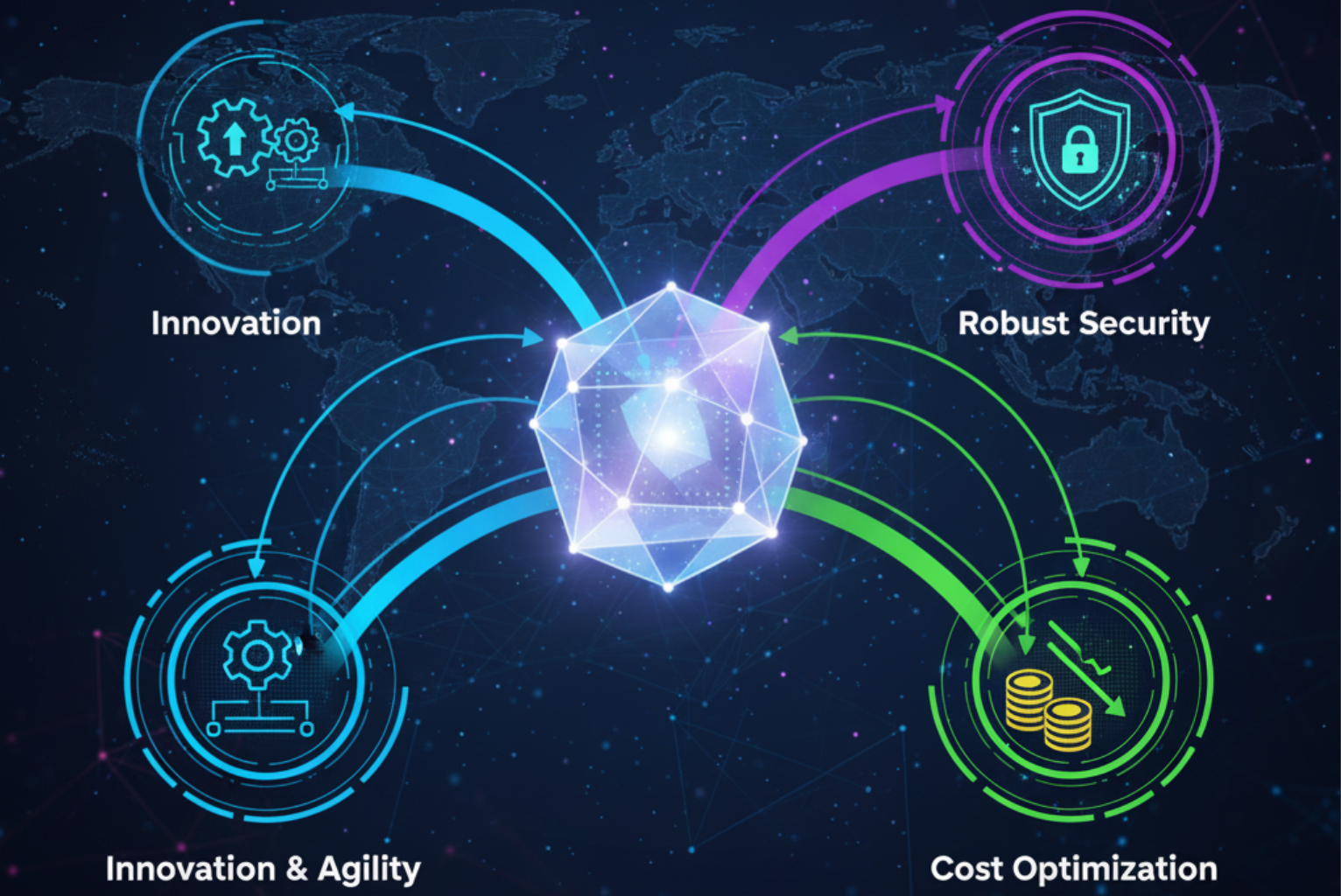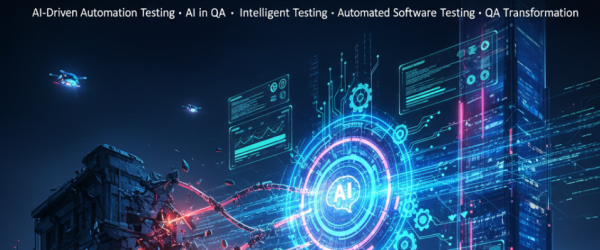Introduction
The cloud is no longer an optional upgrade; it is the definitive platform for modern business. However, the path to cloud success is not a straight line. Organizations often find themselves wrestling with a complex balancing act: chasing innovation with new cloud services while maintaining uncompromising security and, critically, ensuring cost efficiency.
A truly Smart Cloud Adoption strategy masters this trifecta. It requires moving beyond simple lift-and-shift migration to implementing resilient, strategically governed infrastructure.
1. The Innovation Imperative: Agility Above All Else
The primary driver for moving to the cloud is agility. Cloud infrastructure provides a massive competitive edge by allowing businesses to deploy, test, and scale new products faster than ever before. This pace, however, can introduce sprawl if not managed properly.
- Serverless and Microservices: Smart adoption prioritizes cloud-native architectures like serverless computing and microservices. These approaches abstract the management layer, allowing developers to focus purely on code. This drives faster innovation cycles and eliminates idle capacity costs.
- The Global Scale Opportunity: Cloud computing’s global reach allows businesses to serve customers worldwide with low latency. The global public cloud services market is projected to reach $679 billion in 2024, demonstrating the relentless appetite for cloud-based innovation and global scaling (Gartner, 2024).
2. Uncompromising Security: Shifting the Focus to Governance
In the early cloud days, security often felt like an afterthought. Today, it must be integrated by design. Smart adoption acknowledges that security in the cloud is a shared responsibility, requiring robust governance over technical controls.
- Zero Trust and Identity: The move to the cloud necessitates adopting a Zero Trust security model. This means no user, device, or application is inherently trusted, requiring continuous verification. Centralized Identity and Access Management (IAM) is foundational.
- Automated Compliance: Manual security checks cannot keep pace with dynamic cloud environments. Best-in-class strategies use automated policy enforcement to ensure configurations comply with industry standards (like GDPR or HIPAA) in real-time. This includes automating critical tasks like patch management and vulnerability scanning.
- Breach Costs: The financial risk of poor security is undeniable. The average total cost of a data breach in the cloud environment is roughly $4.77 million, underscoring the necessity of making security the priority (IBM, 2023).
3. Controlling the Sprawl: Mastering Cloud Cost Efficiency
The most common pitfall of cloud adoption is uncontrolled spending, often called “cloud sprawl.” While the cloud provides elasticity, the pay-as-you-go model means every underutilized resource adds up.
This is where FinOps (Cloud Financial Operations) becomes essential. FinOps is a cultural practice that brings technology, finance, and business teams together to make data-driven decisions on cloud spending.
- Reserved Instances and Spot Instances: Strategic planning utilizes cost-saving commitments, such as purchasing Reserved Instances (RIs) for predictable workloads and leveraging Spot Instances for non-critical, interruptible tasks.
- Automated Right-Sizing: The human element often leads to over-provisioning (“just in case”). Intelligent automation and tools monitor actual usage and automatically right-size Virtual Machines (VMs) and database capacity. Studies show that organizations implementing FinOps practices can achieve 20% to 30% savings in their annual cloud spend (Gartner, 2023).
| Pillar of Smart Cloud Adoption | Core Strategic Action | Primary Business Benefit |
| Innovation | Adopt serverless and microservices architecture. | Faster Time-to-Market (Agility) |
| Security | Implement Zero Trust and automated policy enforcement. | Risk Mitigation & Compliance Assurance |
| Cost Efficiency | Practice FinOps and automate resource right-sizing. | Maximized ROI and Predictable Spend |
Conclusion: Achieving Resilient Cloud Maturity
The era of simply using the cloud is over; we are now in the era of Smart Cloud Adoption. Success is defined by the ability to strategically manage the delicate balance between innovation, security, and cost.By integrating governance, security automation, and FinOps principles from day one, enterprises can ensure their cloud infrastructure is not just a collection of services, but a resilient, efficient, and strategically powerful platform capable of supporting any future growth trajectory.







